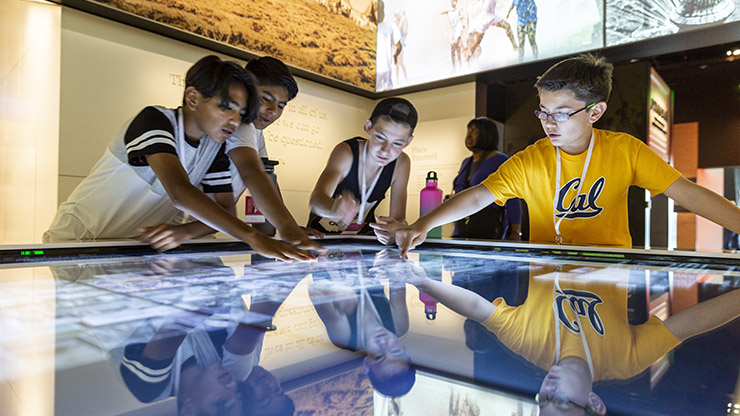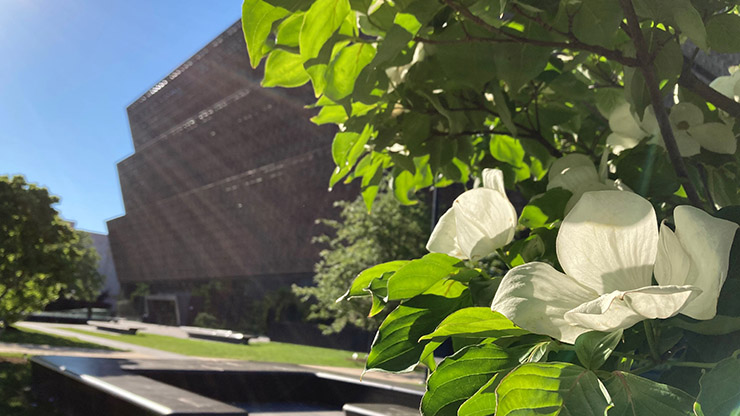The building is a work of art
An ark
A work
Of African and African American ironwork
A work of Bronze
& Green-ness
& Reflection
Growth and Sustainability
In the African American community, a good batch of collard greens has always been much more than a meal. In the past, stewing those green leaves with whatever part of the hog was left represented creativity, resourcefulness, love. It was how our ancestors made the most of their surroundings, nourished families, sustained communities, and strengthened souls. Today, a pot of greens remains an ever-present part of African American culture – a link to tradition and our living history.
As we look to the future of the National Museum of African American History and Culture, we are inspired by that pot of greens as we seek innovative and engaging ways to cultivate, nourish, and grow.
Select Programs and Initiatives

Endowment
Just as a good meal sustains, so does a strong endowment. This permanent fund strengthens the Museum by providing long-term income for programs, staffing, and collections care. Your investment in the National Museum of African American History and Culture’s endowment will secure the Museum’s position as the flagship institution of the African American experience in the 21st century and beyond.

Reunion and Reflection
A people’s journey, a nation’s history. A century in the making. When constructing the Museum, we always envisioned it as a community gathering place. In fact, we affectionately refer to our entrance as “the front porch.” Our visitors feel that too. Families hold their reunions here. Artists visit for inspiration. Educators come to learn. Leaders are transformed. We want to fully embrace that role.
With your support, we will build welcoming spaces where guests can prepare themselves for what they’re about to see and, after their visit, linger to reflect on what they’ve just experienced. We see our grounds expanding to include more reading groves for story time, outdoor classrooms for lifelong learners, and artists’ nooks for visual artists and musicians to share their craft — public spaces that affirm and inspire.

Public Gardens Project
An essential pillar of the National Museum of African American History and Culture’s mission is to explore what it means to be an American and share how American values like resiliency, optimism, and spirituality are reflected in African American history and culture.
This year, we launched a multi-phase project to tell a more comprehensive story of African Americans’ relationship to the land. Expanding on the Museum’s original commitment to beginning each visitor’s journey before entering the building, the NMAAHC Public Gardens Project will create a more holistic guest experience. Reimagined reading groves, thematic plantings, and reflective spaces for visitors will reflect the many ways African Americans have used gardens to create community, provide nourishment, support medicinal remedies, and offer sanctuary, as well as reflect the Museum’s commitment to sustainability.

